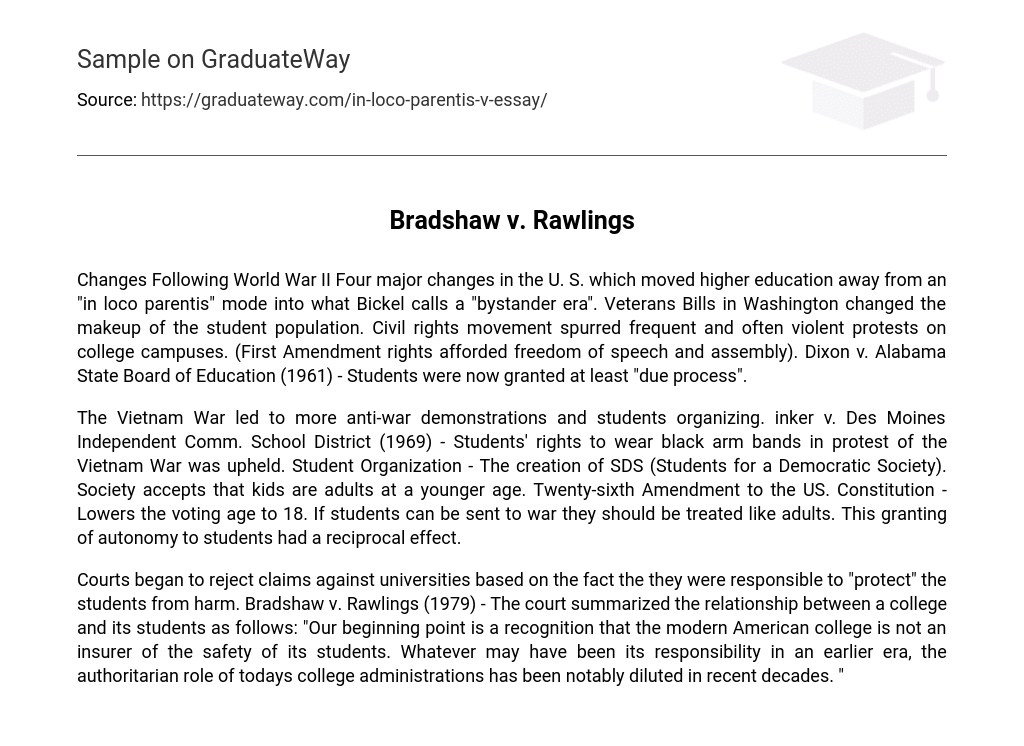Changes Following World War II Four major changes in the U. S. which moved higher education away from an “in loco parentis” mode into what Bickel calls a “bystander era”. Veterans Bills in Washington changed the makeup of the student population. Civil rights movement spurred frequent and often violent protests on college campuses. (First Amendment rights afforded freedom of speech and assembly). Dixon v. Alabama State Board of Education (1961) – Students were now granted at least “due process”.
The Vietnam War led to more anti-war demonstrations and students organizing. inker v. Des Moines Independent Comm. School District (1969) – Students’ rights to wear black arm bands in protest of the Vietnam War was upheld. Student Organization – The creation of SDS (Students for a Democratic Society). Society accepts that kids are adults at a younger age. Twenty-sixth Amendment to the US. Constitution – Lowers the voting age to 18. If students can be sent to war they should be treated like adults. This granting of autonomy to students had a reciprocal effect.
Courts began to reject claims against universities based on the fact the they were responsible to “protect” the students from harm. Bradshaw v. Rawlings (1979) – The court summarized the relationship between a college and its students as follows: “Our beginning point is a recognition that the modern American college is not an insurer of the safety of its students. Whatever may have been its responsibility in an earlier era, the authoritarian role of todays college administrations has been notably diluted in recent decades. “





